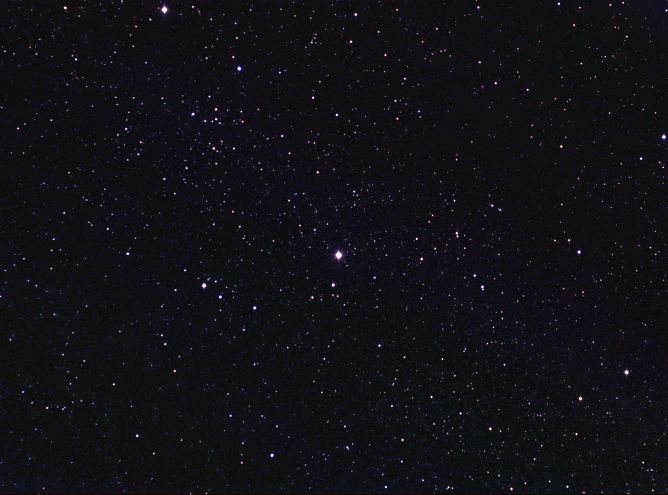Credit & Copyright: John Chumack
Explanation:
This pretty star field in the constellation
Ophiucus is
centered on a star not often seen - RS Ophiuci.
In fact, early last week
RS Oph suddenly became
visible to the naked eye for the first time since 1985.
A type of cataclysmic variable star
classified
as a recurrent nova, RS Oph
dramatically
increased in brightness from 11th
magnitude,
too faint to appear on some star charts.
Historically,
RS Oph was seen to go through only four
similar outbursts
since 1898.
Such stars are now
modeled
as interacting binary star
systems, composed of a compact white dwarf star co-orbiting
with a swollen red giant.
As material falls away from the red
giant it collects in a rotating accretion
disk before ultimately falling on to the white dwarf.
Disk instabilities, or a build up of material on
the compact star result in the occasional but rapid release of
energy through nuclear burning.
At an estimated distance of 3,000 light-years,
RS Ophiuci is
now reported to be fading rapidly.
This telescopic view spans about 2 degrees (4 full moons)
and was captured on the morning of February 16 from the
RAS Observatory
under New Mexico skies.
1999 2000 2001 2002 2003 2004 2005 2006 2007 2008 2009 2010 2011 2012 2013 2014 2015 2016 2017 2018 2019 2020 2021 2022 2023 2024 2025 |
Yanvar' Fevral' Mart Aprel' Mai Iyun' Iyul' Avgust Sentyabr' Oktyabr' Noyabr' Dekabr' |
NASA Web Site Statements, Warnings, and Disclaimers
NASA Official: Jay Norris. Specific rights apply.
A service of: LHEA at NASA / GSFC
& Michigan Tech. U.
|
Publikacii s klyuchevymi slovami:
nova - cataclysmic variable - white dwarf - red giant - binary star - novye zvezdy - kataklizmicheskie peremennye - belyi karlik - krasnyi gigant - dvoinye zvezdy
Publikacii so slovami: nova - cataclysmic variable - white dwarf - red giant - binary star - novye zvezdy - kataklizmicheskie peremennye - belyi karlik - krasnyi gigant - dvoinye zvezdy | |
Sm. takzhe:
Vse publikacii na tu zhe temu >> | |
